Essential Ingredients for Healthy Smoothies

When I whip up a healthy smoothie, I focus on balancing flavor with plenty of nutritional benefits. For fruit, I always toss in a banana for its creamy texture and natural sweetness. Berries are my go-to for antioxidants, plus they add vibrant colors and flavors. I love blending an orange for a punch of vitamin C or an apple for extra fiber.
For vegetables, spinach is pretty much invisible in terms of taste but a powerhouse for vitamins and minerals. When I’m feeling adventurous, I’ll add some kale; just make sure to pair it with sweeter fruits to offset its bitterness. Beet and carrot boost my smoothie’s nutritional profile and bring a lovely sweetness.
Cucumber is another must for me, as it brings a refreshing taste and hydrates my body. And I can’t forget ginger! A small piece adds a kick and can help with digestion.
In terms of healthy fats and more fiber, avocado makes my smoothies deliciously smooth. Here’s a quick list of these go-to ingredients:
Fruits:
- Banana (potassium & energy)
- Berries (antioxidant-rich)
- Orange (vitamin C)
- Apple (fiber)
- Mango & Pineapple (tropical flair & enzymes)
Vegetables:
- Spinach (iron & calcium)
- Kale (vitamins A, K, C)
- Beet (nitrates & folate)
- Carrot (beta-carotene)
- Cucumber (hydration)
- Ginger (digestion)
Additional Superfoods:
- Avocado (healthy fats & creaminess)
By throwing these ingredients into my blender, I ensure my smoothies are not just tasty, but also laden with health benefits.
Optimizing Nutrient Intake
When I make a smoothie, I always aim to pack it with the most nutritious fruits and vegetables. It’s the perfect opportunity to optimize my vitamin and mineral intake in a delicious way.
Best Vegetables for Maximum Nutrients
Vegetables are powerhouse ingredients for nutrient-dense smoothies. I focus on these veggies for their high nutrient content:
- Spinach: It’s rich in iron, magnesium, and vitamins A, C, and K.
- Kale: Delivers a hefty dose of vitamins A, C, K, as well as minerals like calcium and potassium.
- Beet: Adds fiber and folate, plus it gives a vibrant color.
- Carrots: High in beta-carotene, which the body turns into vitamin A.
- Sweet Potato: A good source of vitamin C and B-complex vitamins.
- Pumpkin: Loaded with vitamin A and adds a creamy texture.
- Broccoli: This one’s a bit surprising, but it’s high in vitamins C and K.
- Cauliflower: It’s subtle in flavor, but rich in vitamins C and K, and boosts fiber content.
I often toss these veggies into my blender with a bit of water or plant-based milk to ensure they’re well-puréed.
Highlighting Fruit Benefits
Now, for the sweet part, fruits not only sweeten the deal but also contribute essential nutrients:
- Berries (strawberries, blueberries, raspberries): Packed with antioxidants and vitamin C.
- Apple: Provides fiber and a hint of sweetness without overpowering other flavors.
- Mango and Peach: Both are great sources of vitamins A and C, and they bring a tropical zing to my smoothie.
- Banana: Offers potassium and gives a creamy texture.
- Orange and Pineapple: Contain vitamin C and add natural sweetness.
- Lemon and Lime Juice: High in vitamin C and can brighten up any smoothie flavor.
Inclusion of fruits enhances the taste while sneaking in extra vitamins and antioxidants. I just make sure to balance out the sweetness from fruits with the veggies to keep my nutrient intake on point.
Creating the Perfect Texture

When I make smoothies, texture is everything! To get it just right, I use a combo of fruits and vegetables along with creaminess and thickness factors. It’s like a form of art, balancing the silky smooth with the lush thickness.
Take bananas, for example. These guys are smoothie champs! They’re like nature’s thickener, giving a rich texture that’s just amazing. I sometimes chuck them into the freezer before blending. It ramps up the creamy factor and cuts down on the need for ice, which can water things down.
I’m a big fan of avocados as well. I mean, is there anything they can’t do? They add a creamy texture that feels luxurious. Plus, they’re packed with healthy fats that are good for you.
Here’s a quick list of thickness levels:
- Bananas: Ultimate creaminess when frozen
- Avocado: Smooth and luxurious
- Yogurt: Adds thickness and a tangy flavor
- Milk: Dial-up or down for thickness
- Coconut milk: Tropical twist with richness
For the frozen veggies, they’re a secret weapon. Not only do they cool down the smoothie, but they also thicken without overpowering the taste.
Fiber-rich ingredients like these also ensure my smoothies are satisfying and digest well. They prevent the smoothie from being a sugar bomb since fiber slows down sugar absorption.
Lastly, if you want that frosty touch, a little bit of ice can work, but don’t go overboard. I use it sparingly to avoid diluting the flavors I’ve worked so hard to combine.
Boosting Smoothie Flavors

When I toss fruits and veggies into my blender for a smoothie, I aim for that perfect balance of taste and nutrition. To naturally enhance the flavors, I always reach for certain sweet fruits. Berries, like strawberries and blueberries, are a go-to for that zing and are chock-full of antioxidants.
- Mango and pineapple are tropical delights that not only add a rich sweetness and creaminess but also bring a bunch of vitamins to the mix.
Sometimes, I want a bit of a kick in my smoothies, and that’s where ginger comes in. A small chunk of fresh ginger can seriously elevate the taste profile. It’s spicy, it’s bold, and hey, it’s great for digestion!
To sweeten things up without turning to refined sugars, I opt for maple syrup or dates. Just a drizzle of maple syrup can make a smoothie taste like a treat, while dates add natural sweetness along with a good fiber punch. Here’s a quick tip: soak the dates in warm water for a few minutes to soften them up before blending for a smoother texture.
- Dates are amazing – they’re like nature’s candy and double as a great sweetener.
Finally, to get that smooth creaminess while also sneaking in some healthy fats and protein, a scoop of almond butter does wonders. It makes the smoothie more satiating, letting me power through my morning.
- Sweet Fruits: Berries, mango, pineapple
- Enhancers: Fresh ginger, maple syrup, dates
- Creaminess: Almond butter
By playing around these favorites, I whip up smoothies that are both energizing and flavorful, keeping everything casual just like how smoothies should be – fun, easy, and downright delicious.
Specialized Smoothie Recipes
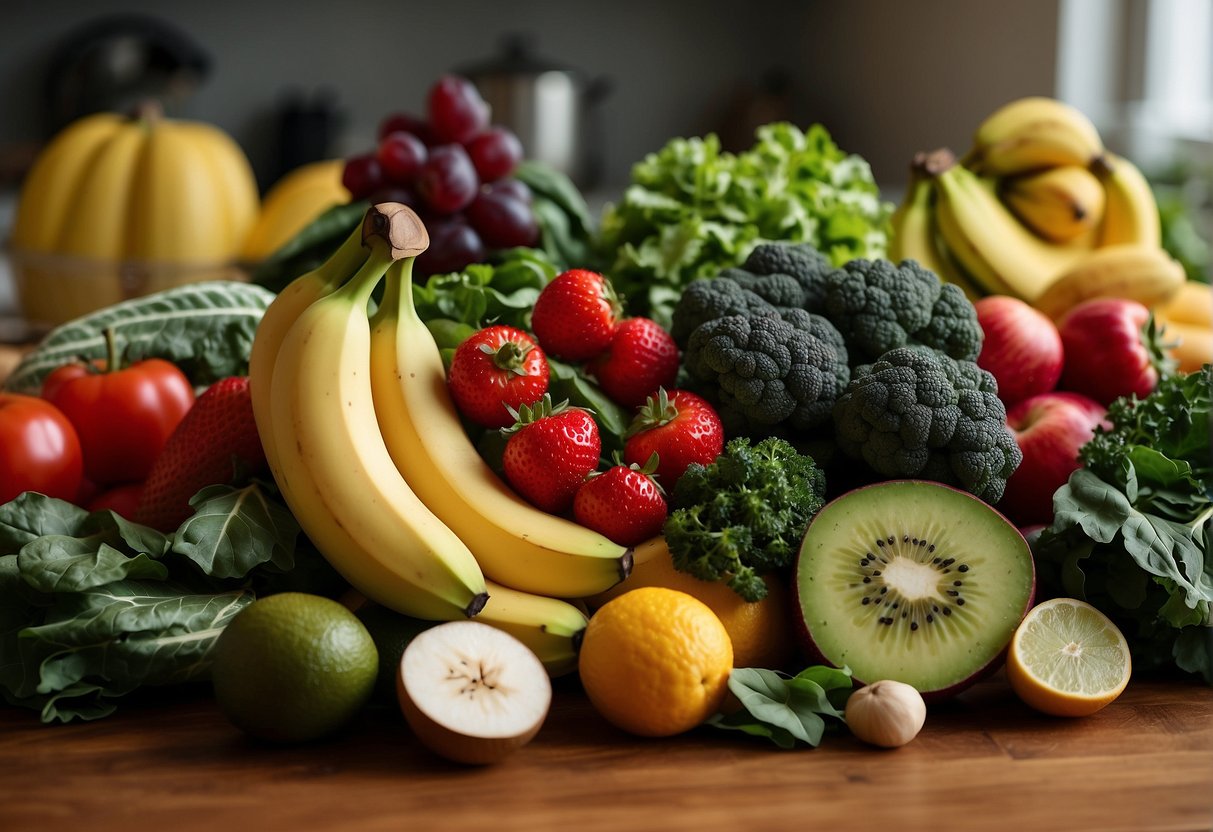
Crafting the perfect smoothie can be an art form, and I’ve got some specialized smoothie recipes that cater to various needs and tastes. From green powerhouses to digestive aids, each drink is a fusion of flavor and nutrition.
Green Smoothie Mastery
To master a green smoothie, you can’t go wrong with spinach or kale. These leafy greens pair well with a sweet fruit like mango or banana to balance the flavor. I like to add apple juice or water for hydration, and occasionally throw in some chia seeds for a fiber boost. Check out these nutrient-rich green smoothies for inspiration.
- Spinach Smoothie Recipe:
- Spinach
- Banana
- Chia seeds
- Water or apple juice
Vegetable Smoothie Variations
Vegetable smoothies can be incredibly diverse. I enjoy a beet smoothie for its vibrant color and sweet taste, or a cauliflower smoothie which adds creaminess without overpowering other flavors. Vegetables like pumpkin, squash, and zucchini also make for hearty smoothie additions. For recipe ideas, explore these veggie-packed smoothies.
Protein and Energy Smoothies
When I need a protein kick, Greek yogurt, almond butter, or a scoop of protein powder make excellent additions. These ingredients not only increase the protein content but also contribute to a smoothie’s creamy texture. For days that require extra stamina, I opt for a blend with oats and peanut butter for sustained energy.
Smoothies for Digestive Health
Ginger and peppermint are my go-tos for aiding digestion in a smoothie. Paired with fibrous fruits and vegetables like apples, kale, and celery, these smoothies can help support digestive health. Peas are another great source of both protein and fiber, promoting a well-functioning gut.
Low-Sugar Options for Weight Management
I’m mindful of the sugar and calorie content in my smoothies when I’m watching my weight. Low-sugar fruits, such as berries, are a staple in my blends. I also experiment with veggies like sweet potatoes and carrots for their earthy sweetness and nutrient profile without spiking my blood sugar.
Smoothies That Appeal to Picky Eaters
Combating picky eaters at home, I disguise veggies with flavors they love. Chocolate masks the taste of spinach well, and creamy peanut butter can make kale disappear on the palate. Blending in favorites like banana and mango ensures the smoothie is always a hit. Here are some smart combos for those tough critics.
Understanding Smoothie Additives
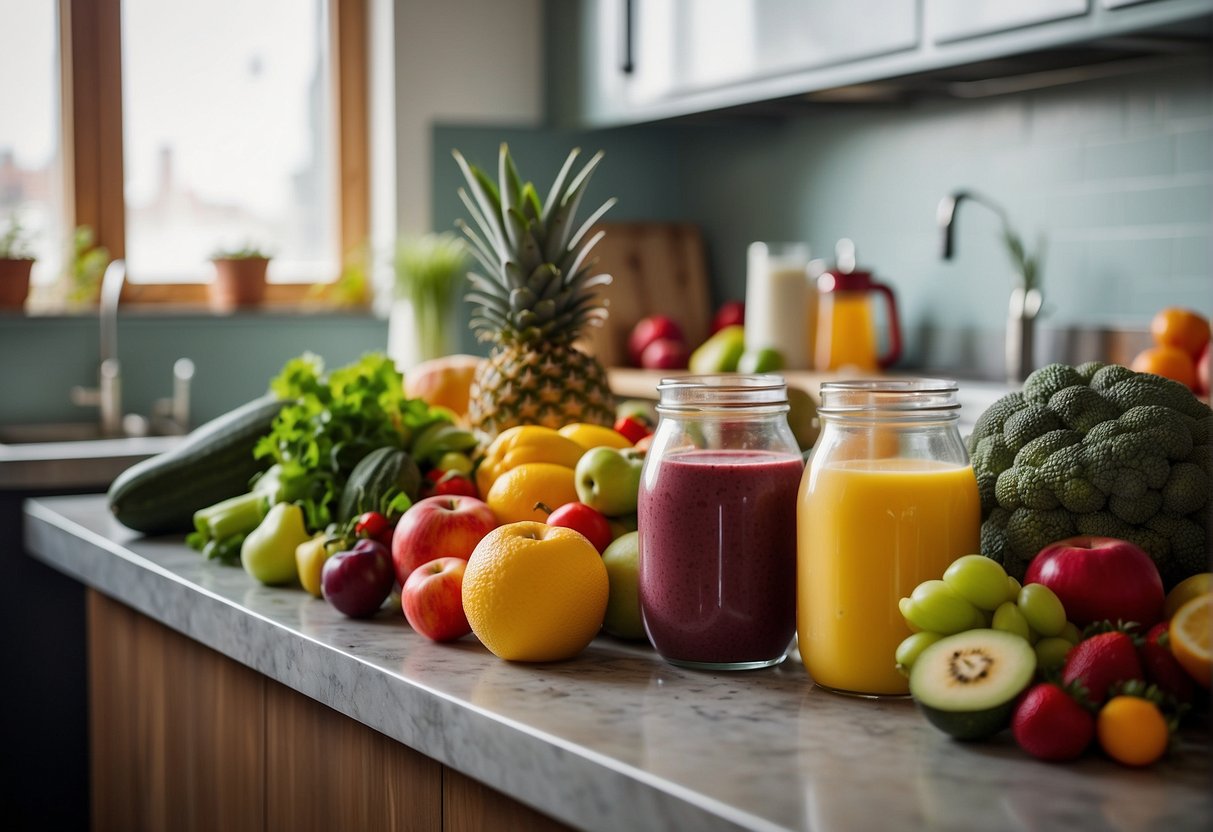
When I dive into making my smoothies, choosing the right additives is key to not just taste, but also maximizing health benefits. Each choice—from superfoods to sweeteners—can either amp up the nutrition or just add empty calories.
Enhancing with Superfoods
I love throwing superfoods into my blender to give my smoothies a nutritional punch. Superfoods like chia seeds, spinach, and kale are easy go-tos. They’re like nutrient-dense power-ups that bring plenty of vitamins, minerals, and antioxidants with minimal calories.
- Chia seeds: They’re small but mighty, offering a rich source of omega-3 and fiber.
- Spinach: It’s virtually flavorless in a smoothie but packs in iron and magnesium.
- Kale: A bit more peppery, but vitamin K and calcium are worth the blend.
Liquids That Work Best
The liquid base of your smoothie matters as much as the fruits and veggies. Here’s a quick rundown:
- Water: It’s calorie-free and helps hydrate. Can’t go wrong here.
- Milk: For a creamier smoothie and a touch of protein, cow’s milk or soy milk work wonders.
- Nut milks like almond and coconut milk: They’re lower in calories and add a nutty flavor.
- Juice: I’d go for the ones with no added sugars for more vitamins without the calorie spike.
Natural Sweeteners for Better Health
Choosing natural sweeteners is my trick for keeping my smoothies healthy but still satisfying my sweet tooth.
- Honey: Just a drizzle adds minerals and antimicrobial properties.
- Maple syrup: It’s not just for pancakes, bringing in a touch of zinc and manganese.
- Dates: They are my secret weapon. Packed with fiber and potassium, they add a caramel-like sweetness.
I pick these sweeteners for not just their taste but their bonus nutrients, giving me sweet flavor without the empty calories.
Smoothie Preparation Techniques
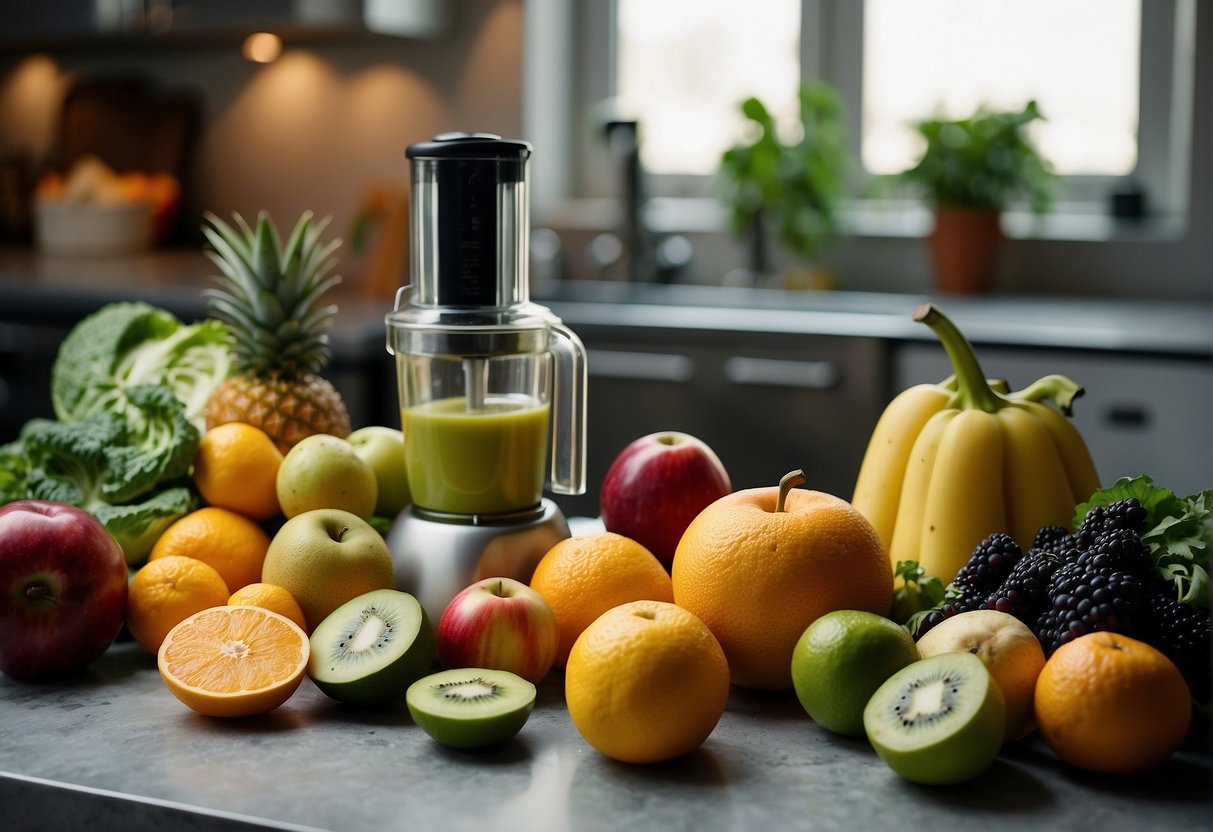
When I get ready to make a smoothie, I’ve found that the right prep can make a huge difference in both flavor and convenience. Let’s dive straight into some of my go-to techniques.
Effective Freezing of Ingredients
Before tossing fruits and veggies in the freezer, I like to wash and cut them into small pieces. For bananas, I peel and slice them before freezing; with berries, I make sure they’re dry to avoid clumping. When it comes to leafy greens like spinach, I prefer to freeze them fresh to maintain their nutrients and texture. Here’s a quick rundown:
- Bananas: Peel, slice, and lay flat on a baking sheet to avoid sticking together.
- Berries: Wash, dry, and spread out on a tray before freezing.
- Spinach: Wash, pat dry, and store in freezer bags as whole leaves.
This method ensures the ingredients are ready to go, and they actually help to chill the smoothie too.
Making Smoothies Without a Blender
Believe me, you don’t always need a high-powered blender to enjoy a smoothie. If I’m without one, I’ll use a masher or fork for soft fruits like bananas and berries. For leafy greens, you might want to steam them first to soften them up for easier mashing. Here’s my basic guide:
- Soft fruits (e.g., bananas, berries): Use a fork or masher to smash them to your desired consistency.
- Leafy greens (e.g., spinach): Steam and then mash or chop finely before hand-mixing with your fruits.
This way, I can still enjoy a smoothie even when a blender is out of reach.
Health Considerations and Benefits
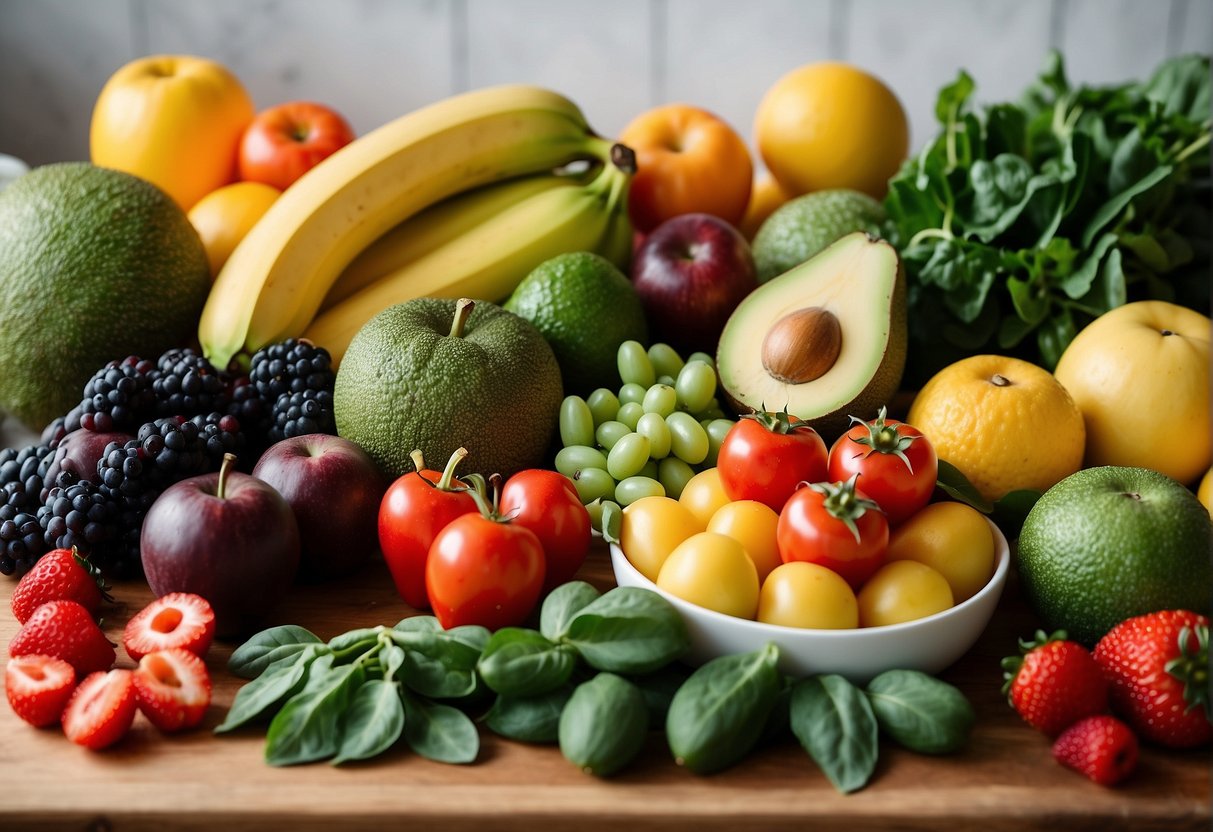
When I blend up my morning smoothie, I’m not just looking for great taste; I’m also aiming to boost my health. Let’s talk about some healthy choices and their benefits:
-
Spinach tops my list for a green smoothie. It’s a nutrient powerhouse with an impressive array of vitamins and minerals. This leafy green helps with bone health and packs a hefty dose of antioxidants that may support my immune system.
-
Kale is another one of my go-tos. It’s got fiber, antioxidants, and is a great anti-inflammatory buddy. Just a handful can help keep inflammation at bay.
-
I love throwing berries into the mix. They’re not just sweet and delicious; they come loaded with antioxidants, which is great for fighting off free radicals. Plus, they can be pretty good for your skin!
Here’s a quick glance at some options and their perks:
| Fruit/Veggie | Benefit |
|---|---|
| Spinach | Rich in iron and calcium |
| Kale | High in vitamin K |
| Blueberries | Filled with antioxidants |
| Strawberries | Packed with vitamin C |
I make sure to avoid adding too much sugary stuff. Sweet fruits are tasty, but I keep it balanced to maintain a healthy smoothie rather than a sugar bomb. I find that sticking to these natural, wholesome ingredients helps me feel full, energized, and ready to tackle my day. Plus, they give my body a helping hand in staying in tip-top shape!
Smoothie Nutrition for Special Diets
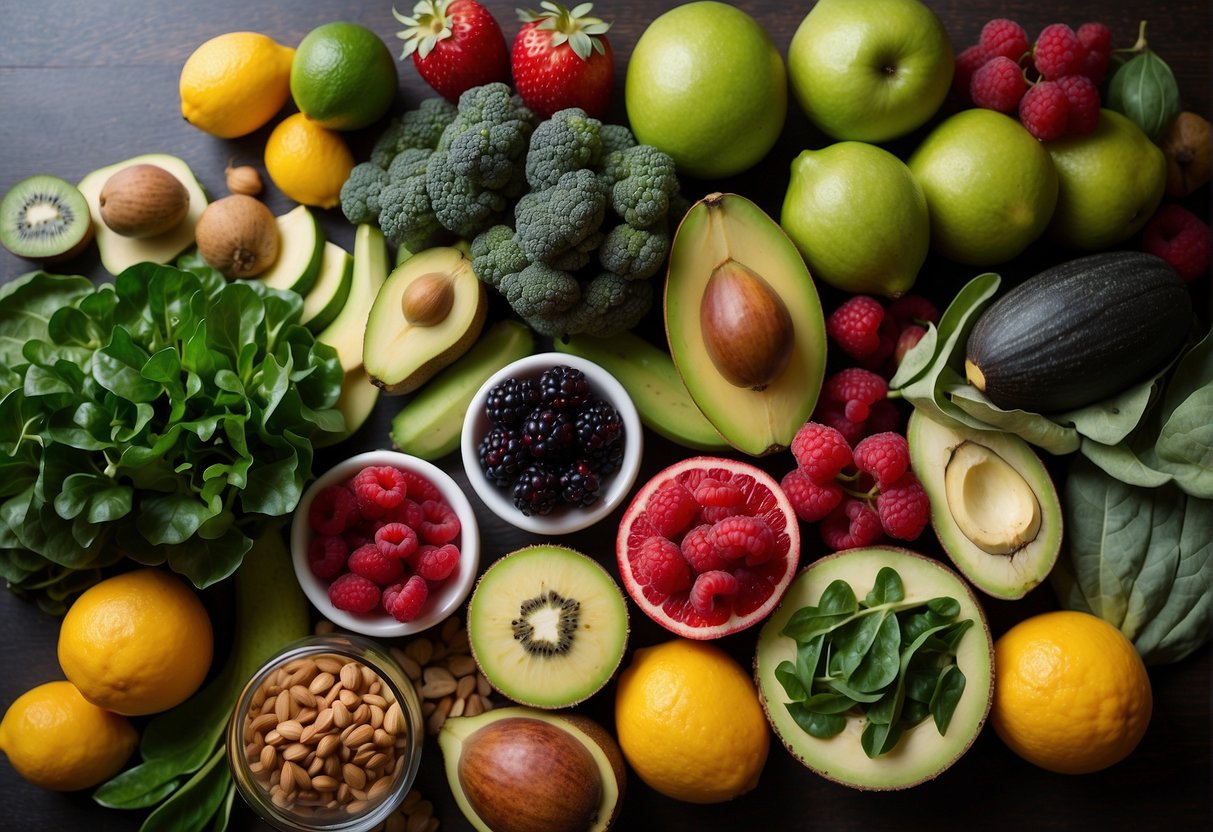
When I’m blending up a smoothie, I always keep special diets in mind. For my friends on a keto diet, I focus on low-carb veggies and fruits. Avocados are a win for their healthy fats, and I throw in some spinach for good measure. Berries are also keto-friendly, so a handful of raspberries can make it into the mix.
For those following a paleo diet, I stick to ingredients that are unprocessed and dairy-free. That means lots of nuts and seeds, plus fruits and vegetables in all their glory. Think banana for sweetness and almonds for a nutty punch.
For my vegan pals, I’m all about plant-based goodness. I usually opt for a non-dairy milk alternative like almond or oat milk as the base. Then I boost the protein content with a vegan protein powder or a scoop of nut butter. Not to forget, chia seeds are excellent for omega-3s.
Dairy-free friends? You’re not left out. Apart from the milk alternatives, I like adding Greek yogurt‘s non-dairy counterparts, like coconut yogurt, to keep things creamy without the lactose.
Here’s a quick cheat sheet I use:
| Diet Type | Fruits & Veggies | Protein Sources | Base |
|---|---|---|---|
| Keto | Avocado, Berries, Spinach | N/A | Water, Unsweetened Almond Milk |
| Paleo | Banana, Mango, Kale | Almond Butter, Hemp Seeds | Coconut Water |
| Vegan | Mixed Berries, Kale | Vegan Protein Powder, Nut Butter | Oat Milk, Soy Milk |
| Dairy-Free | Peaches, Spinach | Coconut Yogurt, Flaxseeds | Rice Milk, Cashew Milk |
Remember, whatever our dietary needs, there’s a smoothie combo out there to keep our taste buds happy and our bodies nourished!
Essential Kitchen Equipment for Smoothie Making
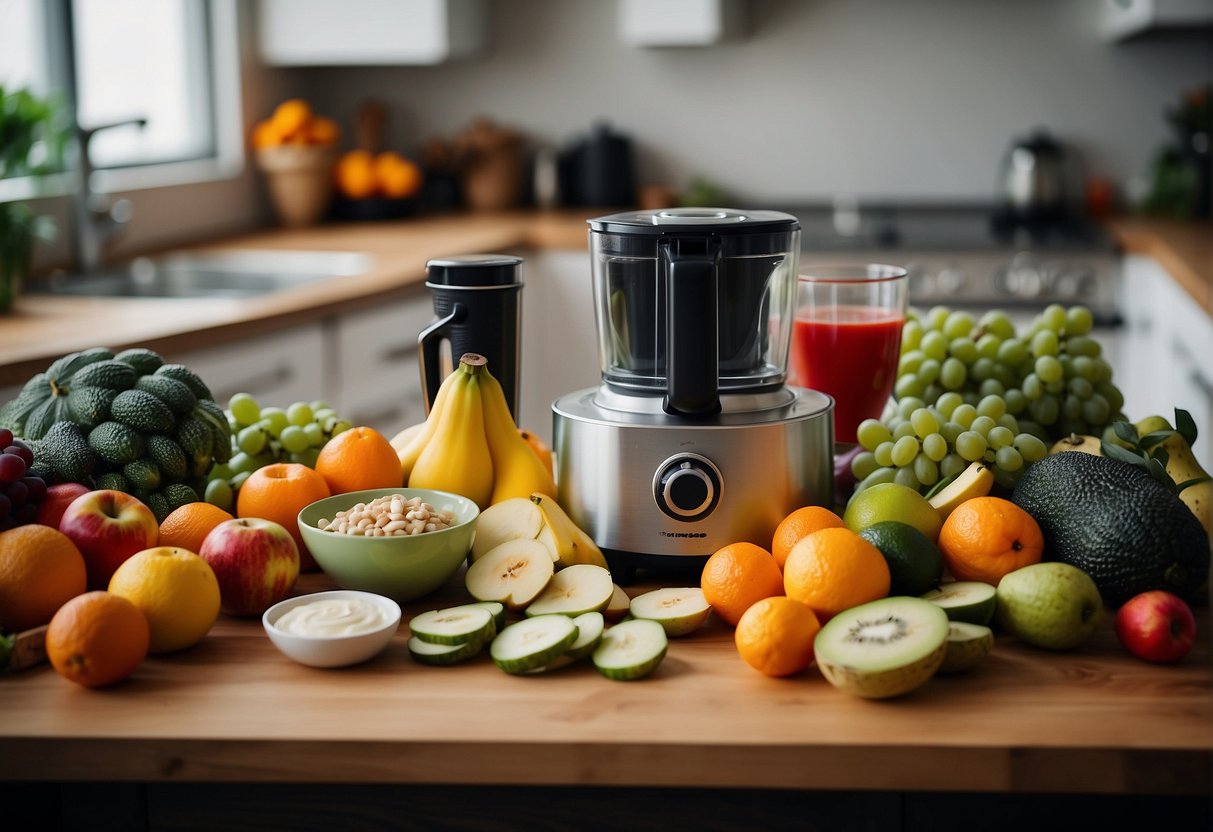
When I’m gearing up to blend a delicious smoothie, there are a few key pieces of equipment I make sure to have on hand. First and foremost, you can’t make a smoothie without a blender. It’s the star of the show. You don’t need the fanciest model, but make sure it’s powerful enough to handle frozen fruit and ice.
Here’s my go-to list:
-
Blender: For those creamy smoothies, a sturdy blender is a must. I keep a lookout for one with multiple speed settings.
-
Measuring cups: Precision matters for that perfect flavor balance. I use these to measure out my ingredients, especially when I’m trying a new recipe.
-
Spoon: A good spoon is essential for scooping thick ingredients like yogurt or for giving my smoothie a quick stir if needed.
-
Juicer: When I’m adding a bit of fresh juice to my smoothies, a juicer comes in handy. It ensures I’m not adding too much and overpowering my other flavors.
And here’s a quick table of what I use each piece for:
| Equipment | Use Case |
|---|---|
| Blender | Mixing all ingredients smoothly |
| Measuring cups | Getting the right amounts of each item |
| Spoon | Stirring and adding thick ingredients |
| Juicer | Extracting fresh juice for added flavor |
Remember, while the right tools can make smoothie prep easier, the most important thing is the quality of your ingredients. Fresh fruits and veggies blended well will always result in a delicious smoothie!
Maximizing Your Smoothie Experience
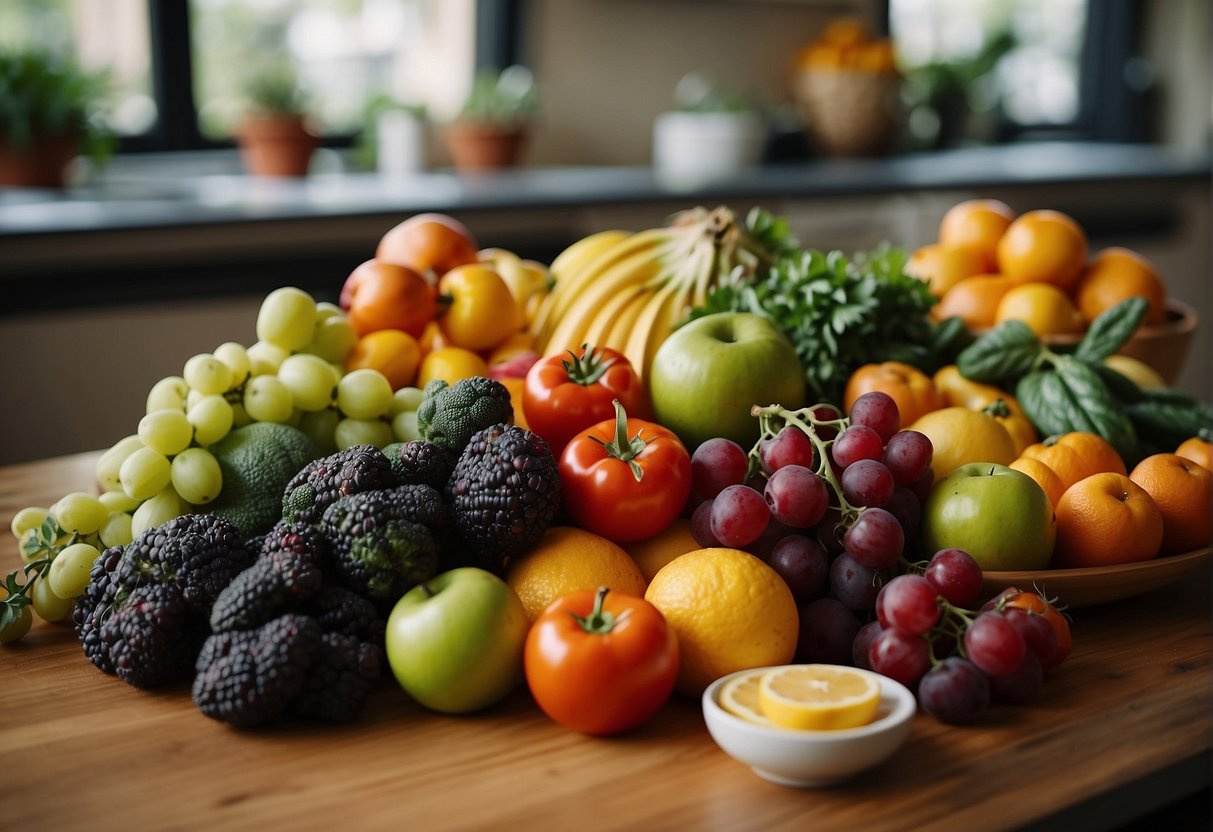
When I whip up a smoothie, it’s all about getting that perfect sip that’s both nutritious and delicious. To ensure my smoothie bowl is Instagram-worthy and taste bud-pleasing, I focus on textures and flavors that sing together in harmony.
Textures:
- For creaminess, frozen bananas or avocados do the trick.
- To add crunch, I’ll sprinkle granola, seeds, or nuts on top.
Flavors:
- I love bold flavors, so a dash of cinnamon or a hint of vanilla extract can really make a smoothie pop.
- Balancing sweet with a little tart, like green apples or kiwis, works wonders.
When it comes to consistency, I’m on the lookout for that perfect middle ground—not too runny, not too thick. Using the right blend of liquid and solids is key:
- For thicker smoothies: less liquid, more frozen fruit or a scoop of yogurt
- For sippable ones: I’ll add a splash more almond milk or coconut water.
To find the best ingredients, here are some of my go-to sites for tasty additions: Check out World of Blenders and It’s a Veg World After All. These help me discover new methods to get that perfect blend.
Remember, the goal is to love every spoonful—so have fun with it, experiment, and find what tantalizes your taste buds.
Incorporating Smoothies into Your Diet

When I start craving something nutritious and refreshing, I often turn to smoothies. They’re a fabulous way to hydrate and can be surprisingly filling, making them an ideal choice for a quick snack or even a meal replacement. Here’s how I seamlessly integrate smoothies into my daily routine:
- Breakfast: On busy mornings, I blend a smoothie to sip on the go. It’s a convenient breakfast that ensures I kickstart my day with a portion of fruits and veggies.
- Post-Workout: After exercising, I need a quick way to refuel. A protein-packed smoothie helps me rehydrate and can be super satisfying.
- Snacks: Instead of reaching for chips or cookies, I’ll whip up a light smoothie. It curbs my hunger without feeling too heavy.
I make sure to balance my smoothies with a mix of greens (like spinach or kale), some healthy fats (hello, avocados!), and proteins (think Greek yogurt or a scoop of almond butter). This combo keeps me full and energized for hours.
Here’s a basic structure I follow for my smoothies:
| Ingredients | Amount |
|---|---|
| Fruit | 1 cup |
| Vegetables | ½ cup |
| Liquid | 1 cup |
| Protein | 1 serving |
| Fat | 1 tbsp |
I get creative with ingredients based on what I have on hand. Berries, bananas, and mangoes are my go-tos for fruits, while cucumbers and carrots subtly boost my veggie intake. For liquids, water works, but sometimes I use almond milk for extra creaminess. Every smoothie I make is a chance to play with flavors while staying healthy.
Advanced Smoothie Making Tips

When I’m diving into the world of smoothies, I love playing around with the balance of flavors. I find it’s key to hitting that sweet spot. Honestly, don’t be afraid to mix veggies with fruits! Trust me, pairing leafy greens with sweet fruits can mask any bitterness. Think kale meets banana.
Here’s a tip on sweetness: if your smoothie tastes too tart, I toss in a pitted date or a splash of honey. Works like a charm every time.
As for textures, frozen fruit is my go-to for that creamy, frosty consistency. Plus, it cuts down on the need for ice which can water things down. If I’m looking for a protein boost, a scoop of my favorite plant-based protein powder or some Greek yogurt ups the protein content without changing the flavor too much.
Here’s a quick guide I go by:
- For greens, I use a 1:2 ratio — one part veggie to two parts fruit.
- To add creaminess, avocados or bananas are brilliant.
- Chia seeds or flaxseeds slip in some omega-3s and help thicken the mix.
Remember, there’s no single way to do this. It’s all about experimenting until you find your perfect smoothie groove. Keep tweaking; the best blend is out there waiting for you!
Understanding the Role of Liquids in Smoothies
When I’m whizzing up my favorite smoothie, my go-to liquids are key to nailing both the flavor and texture. Here’s the scoop on why they’re so important:
Water: It’s the ultimate hydrator and the most accessible liquid I can use. Water doesn’t mess with the taste of my smoothie, and it makes it easy to sip without adding extra calories or sugar.
Milk: Dairy or plant-based, milk adds a creamy consistency that can make any fruit and veggie blend feel like a treat. It’s also a great way to sneak in some calcium and, for the plant-based options, often some added vitamins.
Juice: If I’m looking for a bit of natural sweetness or a fruity tang, juice is my buddy. However, I always check the sugar content – natural sugars can add up fast!
Broth: Sounds odd, right? But if I’m going for a savory smoothie (they’re a thing!), a nice vegetable broth can enhance the flavor without the heaviness of milk or sweetness of juice.
Using the right liquid helps with digestion too, making sure everything blends smoothly and doesn’t sit heavily in my stomach.
Here’s a quick breakdown:
| Liquid | Benefits |
|---|---|
| Water | Hydrates, neutral taste, low-cal |
| Milk | Creamy, nutrient-rich |
| Juice | Natural sweetness, fruity flavor |
| Broth | Savory twist, good for digestion |
Remember, the goal is a drink that’s, well, drinkable. So I always consider what I’m tossing into the blender and match it with a liquid that’ll bring out the best in my smoothie.
Leveraging Seasonal Produce
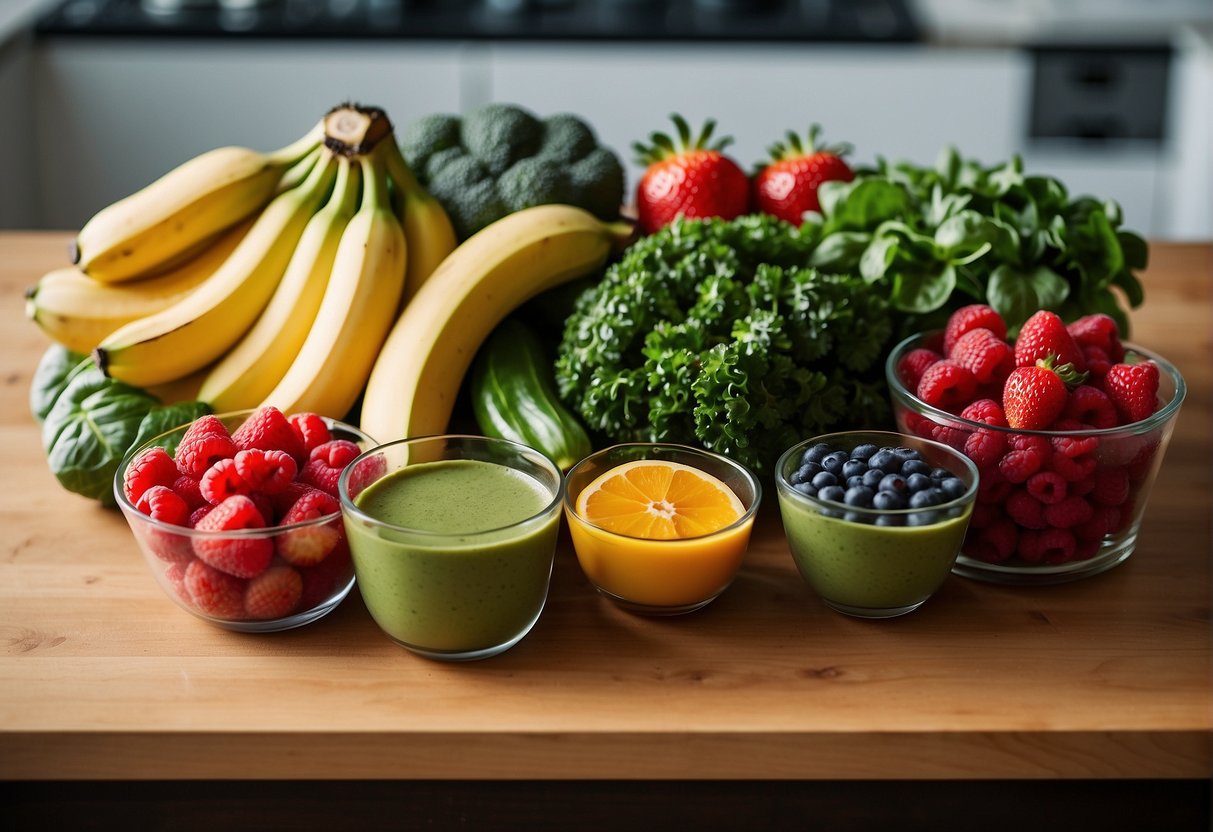
When I’m blending up a smoothie, I love to throw in seasonal fruits and vegetables. They’re usually at their peak in both flavor and nutrients, not to mention they’re often easier on the wallet. Let’s talk about what’s great in each season.
Spring: This is the time for tender leafy greens. Think spinach and kale. They blend smoothly, especially with sweet fruits like pineapples or mangoes.
Summer: It’s all about berries and stone fruits. Peaches, cherries, and strawberries add a natural sweetness and vibrant color to your smoothie. Plus, they mix well with summer veggies like cucumber or fresh herbs.
Fall: Ah, my favorite — the season of squash! Nutrient-dense veggies like sweet potato, butternut squash, and acorn squash give my smoothies a creamy texture and a hint of sweetness. I roast them first to make blending easier and to enhance their natural sugars.
Winter: Citrus fruits shine in winter. They add a zesty punch to balance out earthy winter veggies. I pair them with beets or carrots for a hearty and nourishing smoothie.
Here’s a quick guide to match the seasons with the best produce:
| Season | Fruits | Vegetables |
|---|---|---|
| Spring | Pineapples, Mangoes | Spinach, Kale |
| Summer | Berries, Stone Fruits | Cucumbers, Herbs |
| Fall | Apples, Pears | Sweet Potato, Butternut Squash |
| Winter | Citrus Fruits | Beets, Carrots |
By sticking to what’s in season, I find my smoothies taste better and provide more nutrition. Plus, it feels good to support local farmers and reduce my carbon footprint. Cheers to that delicious, seasonal goodness!
Storing and Preserving Smoothies
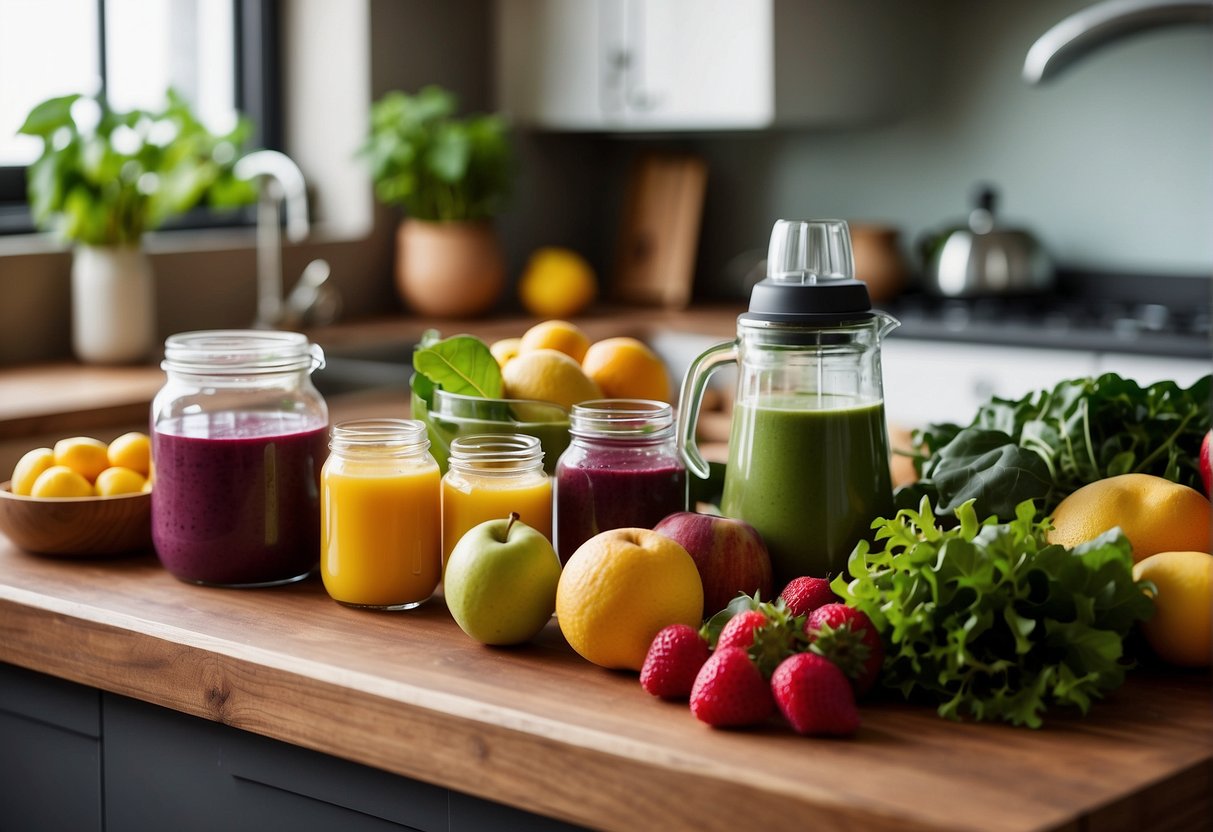
When I whip up a smoothie, I sometimes make extra because let’s face it, convenience is king. The trick is keeping that fresh smoothie vibe going, so here’s what I’ve learned about storing these blended treasures.
Refrigerating my smoothies keeps them fresh but not forever—about 1 to 2 days, max. I fill my containers to the brim to minimize air since oxygen starts to degrade the nutrients and flavors. It’s like how an apple browns, except it happens in the smoothie I painstakingly crafted.
If I’m looking to extend the shelf-life a bit longer, freezing is my go-to. It’s like hitting the pause button on all that freshness. I pour my smoothies into ice cube trays or mason jars, giving a little space because they’ll expand. To avoid a smoothie explosion in my freezer, I learned to leave about an inch at the top.
When I’m ready to thaw, I place my frozen smoothie in the fridge the night before. However, if I forget, I set the sealed container in some lukewarm water to speed up the process.
Here’s a quick rundown:
- Refrigerate for short term: 1-2 days in a tightly sealed container
- Freeze for long term: Use ice cube trays or mason jars, leave space at the top
- Defrost in the fridge or with lukewarm water bath
By doing this, I can enjoy a good smoothie any time without the blender cleanup!
Encouraging Kids to Try Healthy Smoothies
When I make smoothies for children, especially picky eaters, I love to focus on flavors they already enjoy. Berries, for instance, are a fantastic choice to start with because they’re naturally sweet and vibrant, making the smoothie look fun and appealing. I blend strawberries, blueberries, or raspberries for a berry-burst smoothie that’s a hit every time.
Bananas are my go-to for adding a creamy texture, and they pair well with almost any fruit or vegetable. They’re sweet and often loved by kids, which makes them perfect for masking the taste of veggies in a smoothie. I’ve noticed that using ripe bananas also adds natural sweetness, reducing the need for additional sugars.
For veggies, it’s all about being stealthy. I like to sneak in a handful of spinach or kale into a smoothie because their flavors are mild and easily concealed by the fruits. The idea is to create veggie smoothies that don’t taste like veggies at all!
Here’s a simple layout for a kid-friendly smoothie:
- 1 cup of mixed _berries_ (fresh or frozen)
- 1 ripe _banana_
- 1/2 cup of orange juice or water
- A handful of spinach (optional)
Blend until smooth and enjoy the vibrant color and flavors!
I’ve found that letting kids choose their fruits and being involved in the process sparks their interest. They’re more likely to try something they’ve helped create. Plus, emphasizing the cool colors and how it’s their unique creation can make the experience fun and engaging. After all, who can resist a purple smoothie that they’ve designed themselves?
Navigating Food Sensitivities and Allergies
When I whip up smoothies, I’m always mindful of food sensitivities and allergies—it’s a big deal for lots of folks! If I’m avoiding nut allergies, I skip the almond milk and opt for oat, rice, or hemp milk instead. They blend up nice and creamy, no nuts required!
For my pals with lactose intolerance, dairy’s a definite no-go. I totally get it. So, I’ll use lactose-free yogurt or just stick to the dairy-free alternatives I already mentioned. They’re pretty tasty and keep that smoothie game strong.
Now, if gluten sensitivity is on the table, I make sure my oats are certified gluten-free. Cross-contamination is sneaky, but I keep an eye out for it. A smoothie should be a treat, not a gluten trap, am I right?
Here’s a quick list for those on a vegan journey or looking for plant-based options:
- Milk Alternatives: soy, almond, rice, coconut
- Protein Punch: chia seeds, hemp hearts
- Creamy Goodness: avocado, bananas
I make sure to read labels like a detective for hidden allergens and keep my smoothie station clean as a whistle—nobody wants a side of sneezes with their drink. And if I’m ever in doubt, I check out reliable resources like Verywell Health or Healthline for the latest scoop on allergies and what to avoid or include. Staying informed keeps my smoothie game safe and delicious. Cheers to that!
Marketing Your Homemade Smoothie Recipes
When I first started whipping up my own smoothie recipes, sharing them felt like a natural step. Getting the word out there meant tapping into social media. Instagram and Pinterest are visual goldmines for food content, and that’s where my vibrant smoothie photos shine. I always make sure to use hashtags like #SmoothieBowl and #HealthyEating to increase visibility.
Here’s a quick rundown of my strategy:
- Instagram: Daily posts of my smoothie bowls, with a focus on colorful presentation. Stories to engage followers with behind-the-scenes content.
- Pinterest: Pin high-quality images linked to my blog where I post full recipes and tips.
I’ve also found that collaborating with others can help reach a larger audience. I reach out to food bloggers for guest posts or to cross-promote each other’s content. It’s a win-win! I make sure to:
- Use appealing visuals
- Provide value with tips or recipes
- Engage with my community regularly
Here’s a simple table that shows the core elements of my marketing plan:
| Platform | Content Type | Posting Frequency | Engagement Activity |
|---|---|---|---|
| Photos/Stories | Daily | Respond to comments, quizzes | |
| High-quality images | Weekly | Pin regularly, follow boards | |
| Blog | In-depth recipes | Bi-weekly | Newsletters, comment responses |
Remember, authenticity is king. I stay true to my personal style, which helps me connect with my audience. They know I’m just someone who loves making and sharing delicious, healthy smoothies, not a faceless brand.
Frequently Asked Questions
In this section, I’ll answer a few common questions people have when figuring out the best fruit and vegetable pairings for delicious and nutritious smoothies.
What are some ideal fruit and veggie combinations for tasty smoothies?
My go-to for a tasty blend is combining spinach with bananas, as spinach has a mild taste, and bananas add a creamy sweetness. Integrating kale with pineapple is also great for a nutrient-packed and tropical flavored smoothie.
Which fruits are great for adding a natural sweetness to smoothies?
Mango, ripe bananas, and peaches are fantastic for imparting a natural sweetness to your smoothies. These fruits help you skip the added sugars while still satisfying that sweet tooth.
How can I ensure I’m getting enough greens in my daily smoothie?
Pack your smoothie with a handful of greens like spinach or kale. If you’re concerned about the veggie taste, balance it with creamy avocados, which add incredibly creamy texture to your blend, or sweet fruits like berries.
What ingredients should I include in a smoothie for maximum health benefits?
In addition to fruits and veggies, throw in some chia seeds or flaxseeds for omega-3s, a scoop of protein powder for muscle repair, and some Greek yogurt or kefir for a probiotic boost. These add-ons amp up the nutrition without compromising flavor.
Can you suggest any fruit and vegetable blends that are particularly good for weight management?
Sure, a mix of cucumber, celery, apple, and lemon is low in calories but high in hydration and fiber, aiding in weight management. Also, berries are low on the glycemic index and high in fiber, which helps in feeling full longer.
What’s the best liquid base to enhance the nutritional value of my smoothie?
Almond milk or coconut water are my top picks for a liquid base as they’re low in calories but high in nutrients. Coconut water is especially hydrating and rich in electrolytes, making it perfect for post-workout smoothies.
